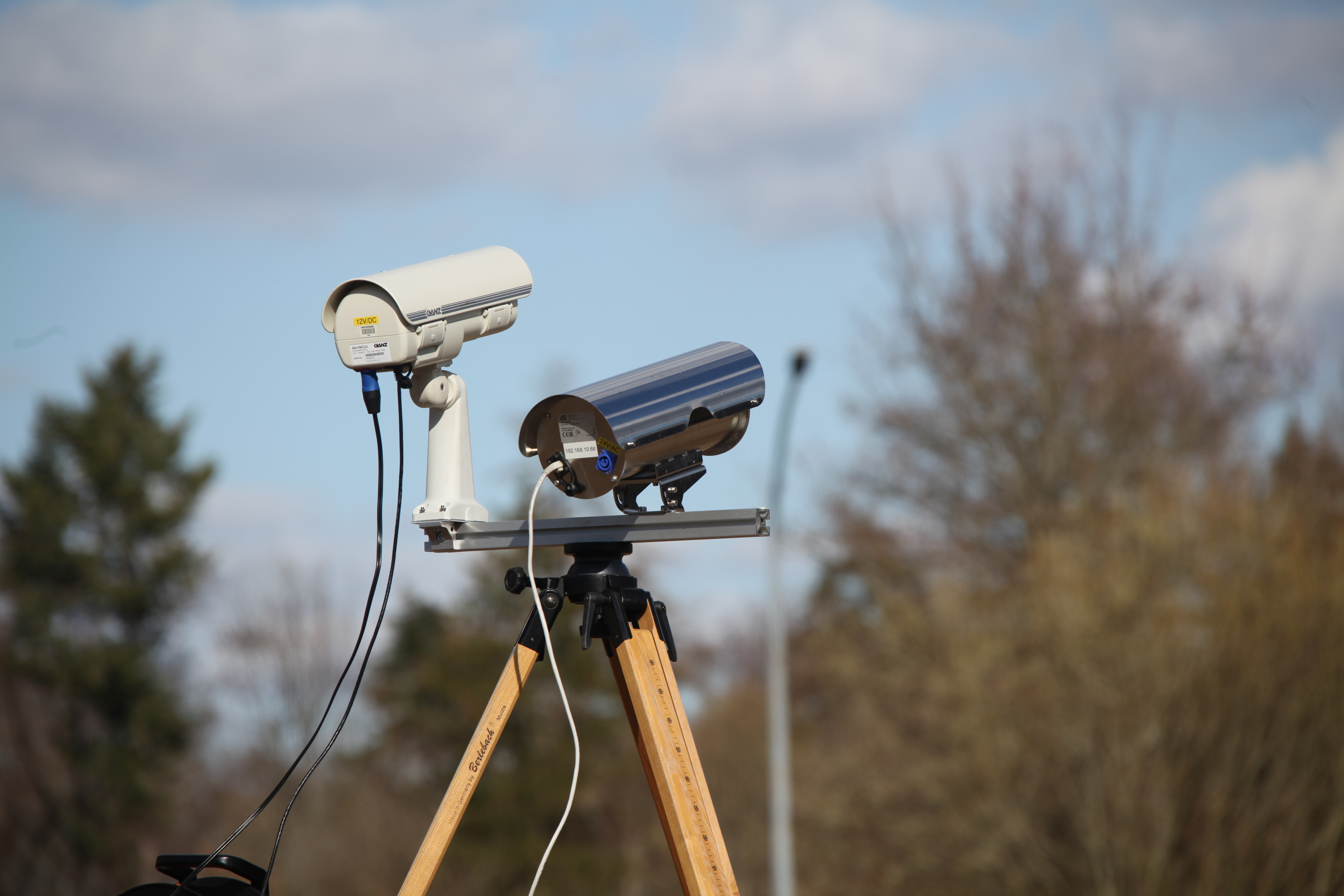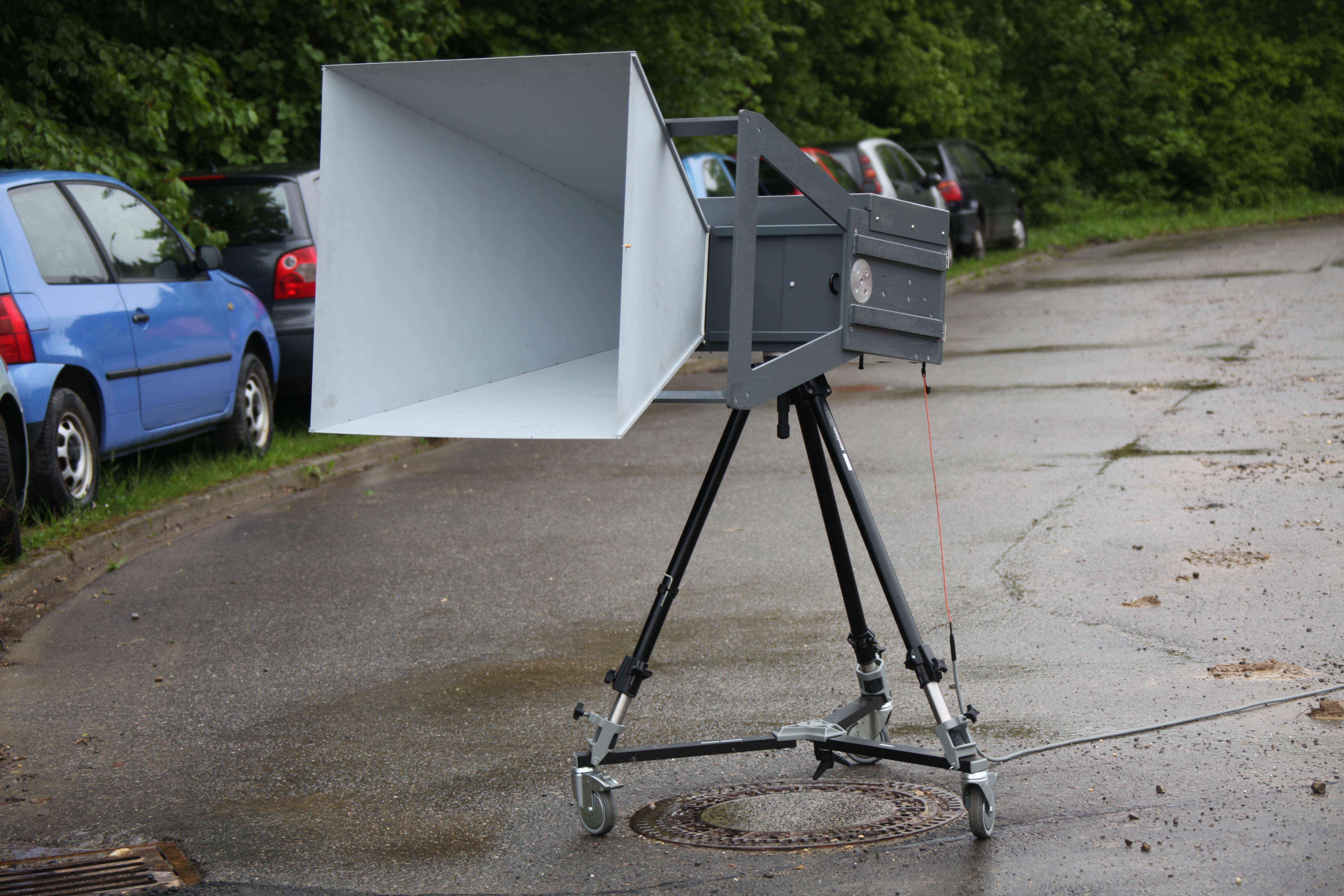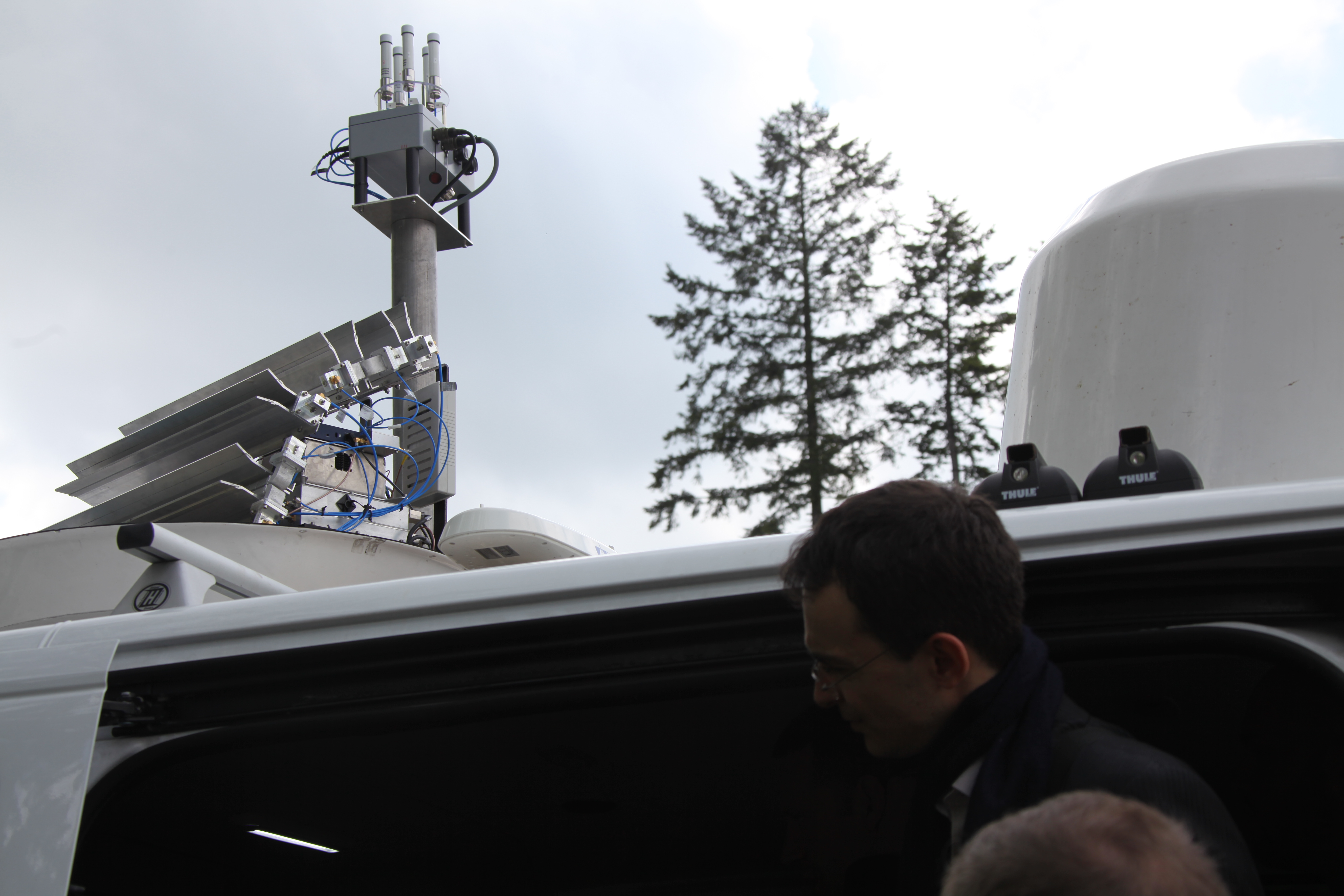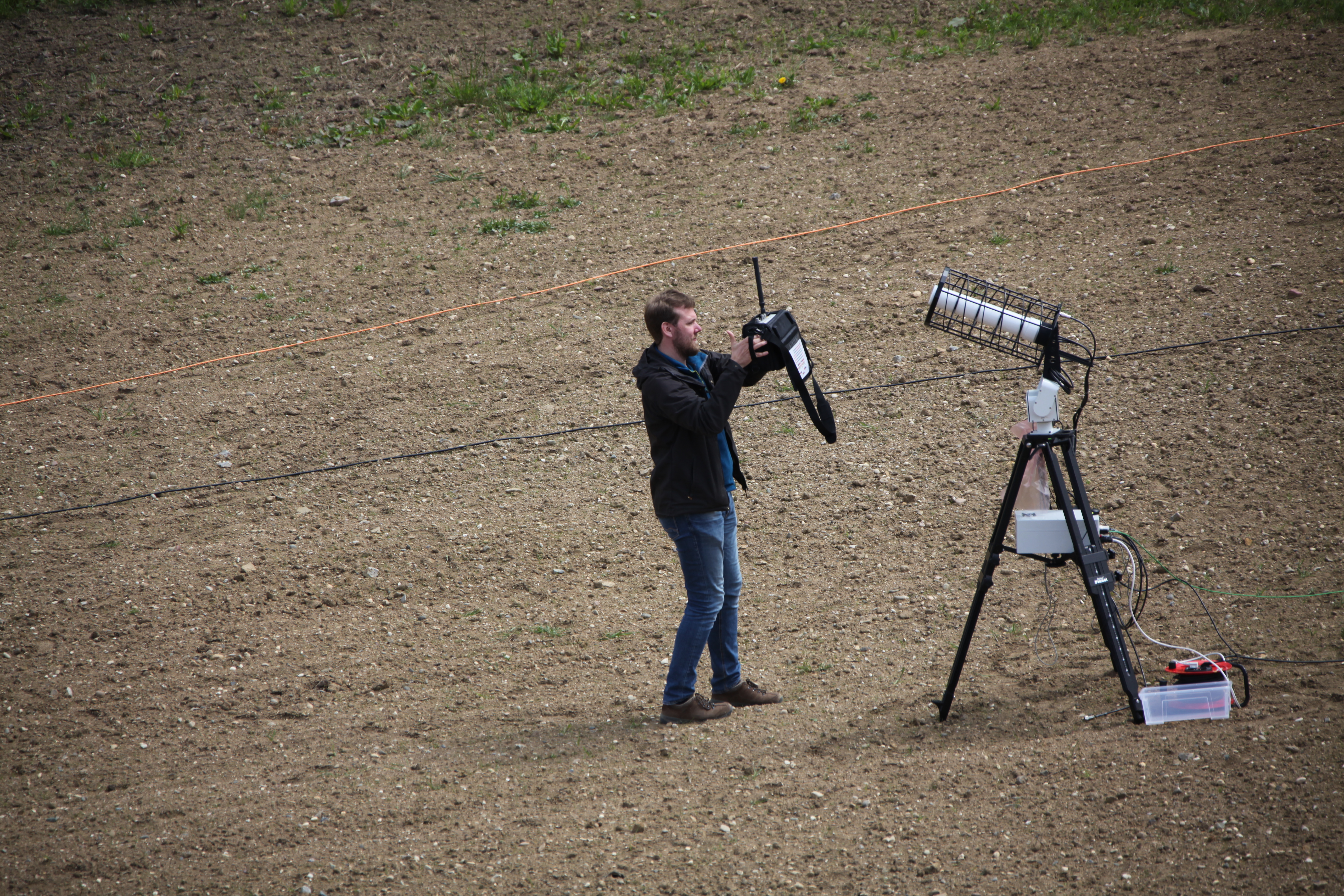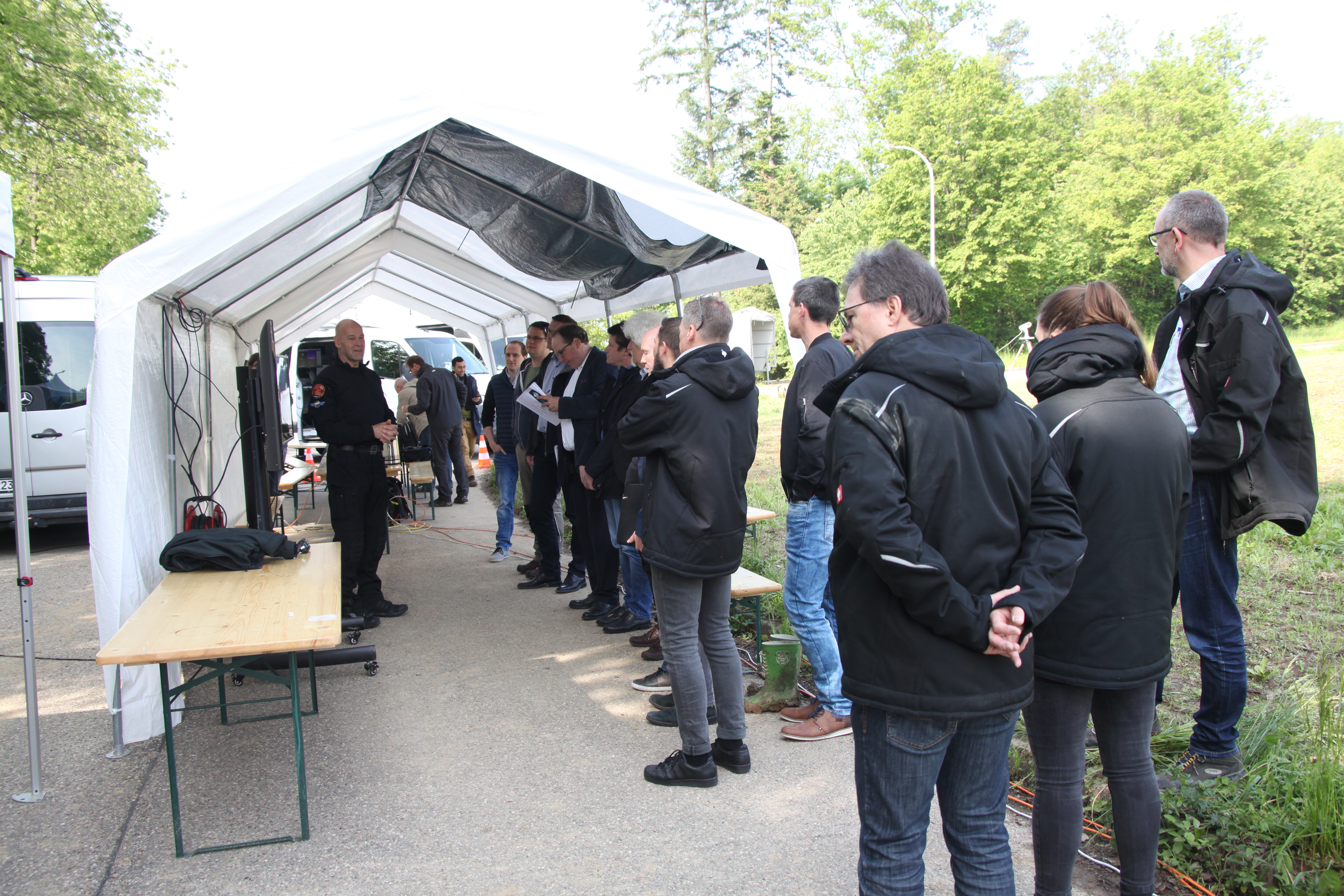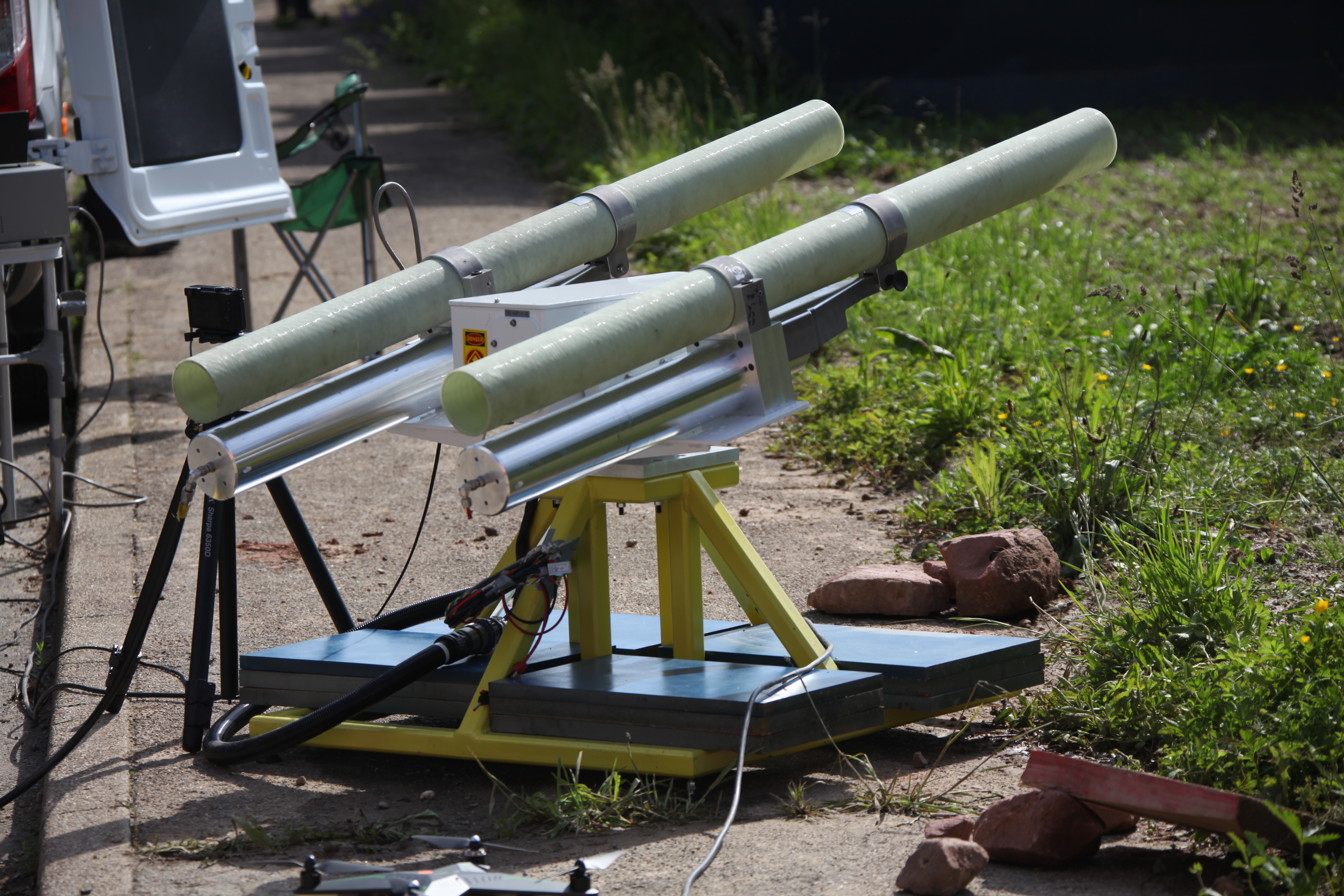AMBOS offers support in the fight against drones
Drones have ushered in a new dimension to airborne attacks and increasingly confront security agencies (referred to collectively in German as »BOS«) with new challenges. Drone incidents at the London Gatwick, London Heathrow and Frankfurt/Main airports have brought operations at three of the largest European airports to a temporary halt, all within a six-month period. There is also a real possibility of attacks targeting critical Infrastructure and major events in light of growing terrorist threats, which is why there is a critical need for systems that can help defend against drones. Devising such systems was the task set out for the BMBF-funded »AMBOS« project. After two and a half years, the research project has now come to a close with a successful demonstration of the solution we developed.
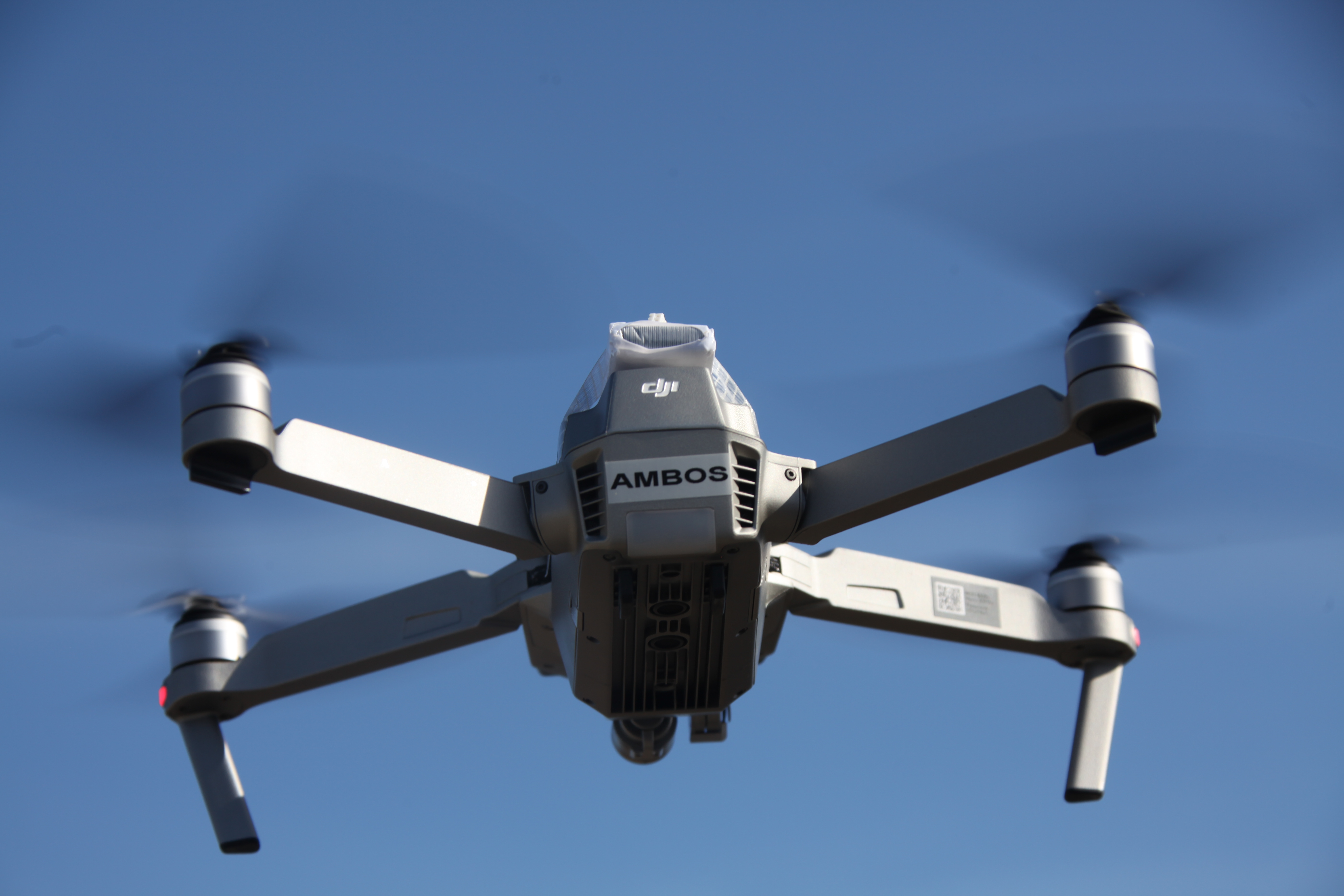
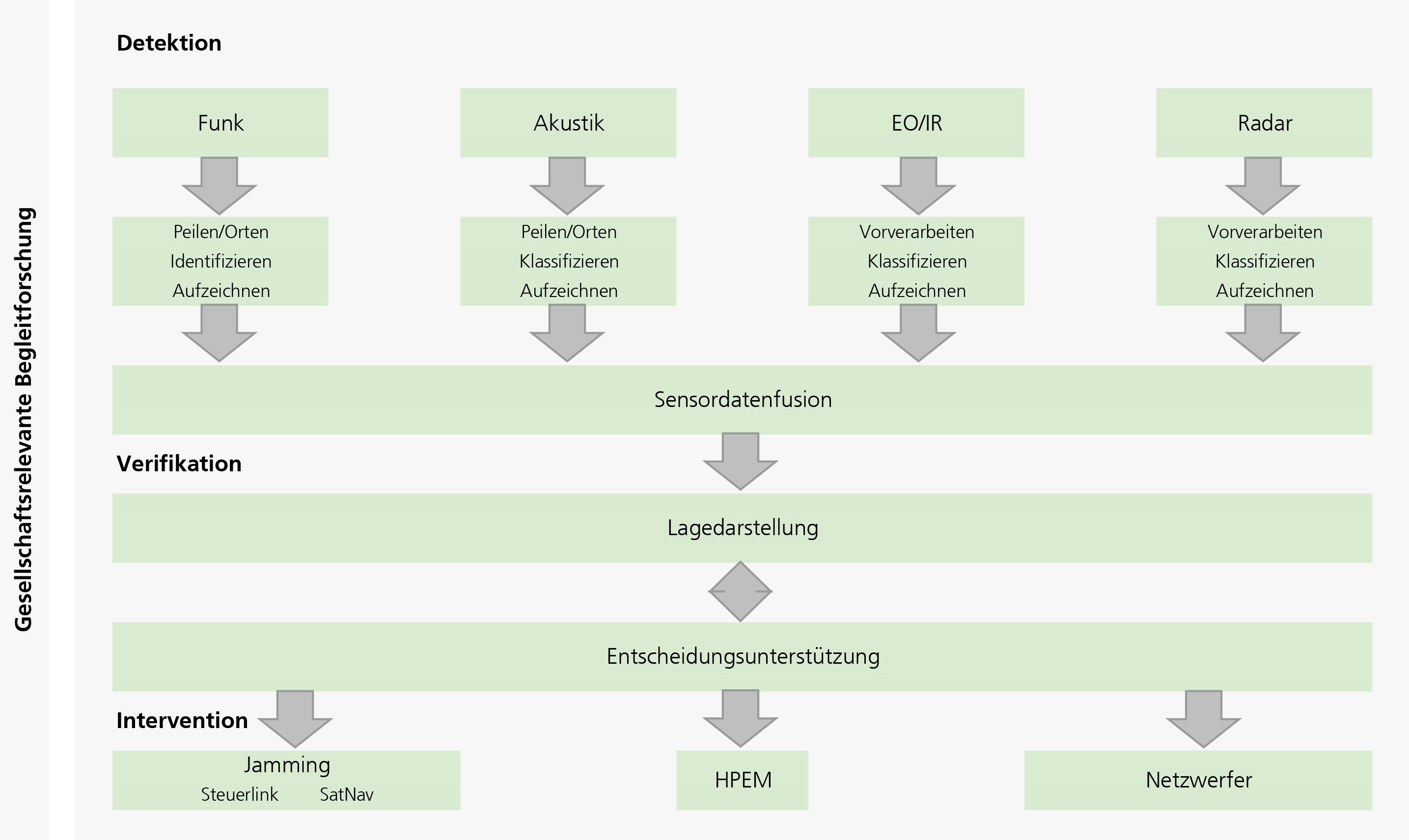
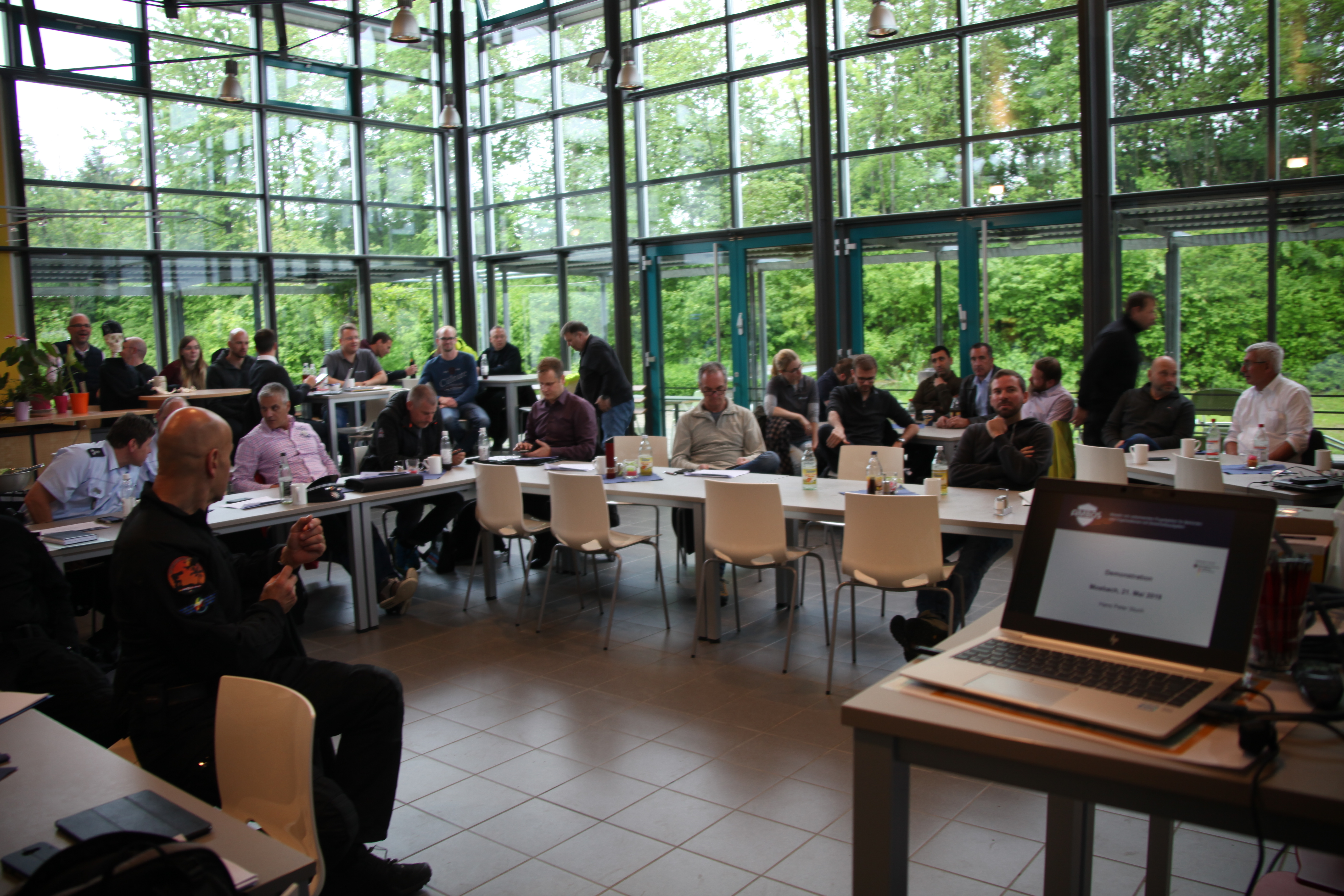
In all, twelve partners from industry, research and educational institutions were involved in the research project titled »Defense against unmanned aerial vehicles for BOS (AMBOS),« which was funded with 2.9 million euros and started in February 2017. The bi-national project was commissioned to develop one demonstrator each in Germany and Austria for defense against drones in defined security areas. The Fraunhofer Institute for Communication, Information Processing and Ergonomics FKIE in Wachtberg was responsible for coordinating the project.
In the German consortium, development and evaluation of the system was carried out by six associated civilian authorities and organizations with security functions (BOS): the Federal Criminal Police Office, the Federal Police, the State Police of North Rhine-Westphalia and Baden-Wuerttemberg, the Bavarian State Criminal Police Office and the German Police University.
»AMBOS is essentially based on scenarios in which terrorist forces use drones to target individuals, government representatives and institutions or critical government infrastructures,« explains network coordinator and FKIE project manager Hans Peter Stuch. »As the number of drones in the sky rises, more and more situations arise in which drones enter no-fly zones out of carelessness, lack of technical understanding or for other illegal, but not terrorist, reasons.«
System architecture and project findings
A multimodal approach was pursued in the project as the only promising solution for a reliable detection and defense system. The AMBOS demonstrator detects airspace threats using four different sensor modalities: radio, acoustics, electro-optics/infrared, and radar. The aim of the sensor-data fusion developed by the Fraunhofer FKIE in the context of the project was to capitalize on the advantages of the individual sensor systems with an intelligent combination of algorithms while eliminating their disadvantages. This succeeded: the detection rate increased, and the false alarm rate was significantly reduced.
The system architecture is designed to combine the merged sensor data to form an ergonomic situational picture. The picture helps users decide which active, proportionate intervention measure to take based on the situation and level of threat. Options range from jamming the drone’s radio control system, satellite navigation or on-board electronics to intercepting the unmanned aircraft with a net.
To ensure that users take such decisions on a legally secure basis in the future, legal and ethical aspects of drone defense were also studied in the context of project-related research. Numerous gaps were identified for which the existing regulations do not yet provide a binding framework. The onus is now on lawmakers to make the necessary regulatory adjustments.
Successful final demonstration
Experiments explored the capabilities and limitations of AMBOS during an intensive evaluation and subsequent demonstration in the presence of numerous visitors from the German security authorities in Mosbach on May 2019. The experiments very clearly demonstrated the versatility of the sensors as an indispensable feature of a reliable drone defense system. The individual sensor types proved their strengths, but also revealed some less optimal possible applications. Overall, however, nearly all of the components developed or refined within the framework of the AMBOS project performed well in conjunction with the core system comprising data-fusion, situation-display and decision-support functions.
»The AMBOS project enabled the realization of a product-like demonstrator with an open-interface architecture that allows the connection of all types of sensors and effectors,« says Stuch, the project coordinator, summing up the results of the project. »Before they are ready for the market, most of the components will still require a specific increase in product development. The industry partners are now challenged to do this. Joint and individual marketing opportunities are open.«

